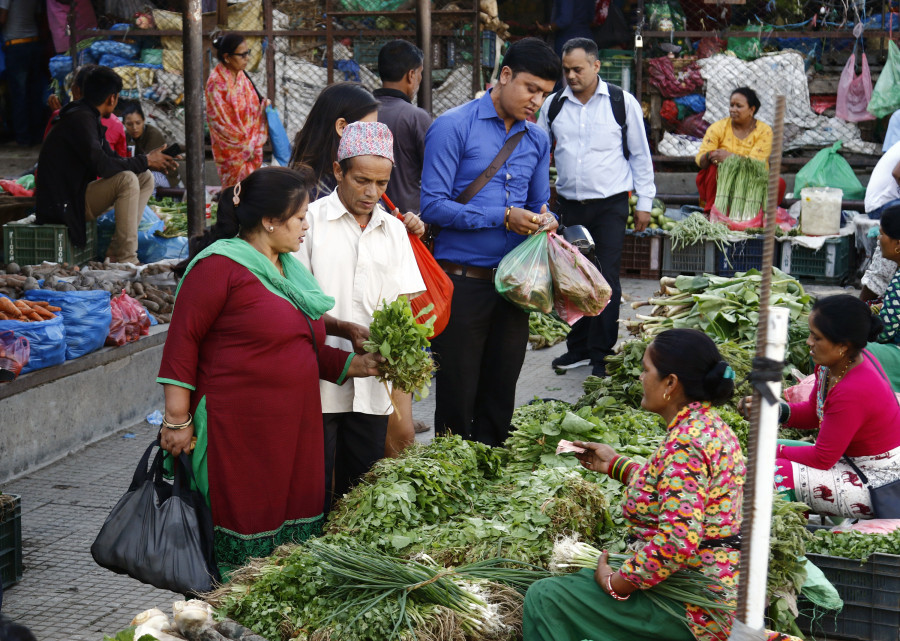Editorial
Minding the markets
Unnatural hikes of vegetable prices harm farmers, squeeze consumers and encourage middlemen.
The disconnect in price between wholesale and retail sellers has long been a reality in Nepal. On a positive note, of late, there has been a decent decrease in wholesale vegetable prices at Kathmandu’s main distributor, the Kalimati fruit and vegetable market. The price of cauliflowers from Tarai has dropped by 61 percent a kg in just a week. While this vegetable was priced at Rs65 per kg on December 21, it now costs only Rs25 as of Sunday, December 29. Similarly, local cauliflower, sold at the same price as the Tarai cauliflower last week, was going for Rs40 on the same day. Prices of tomatoes, potatoes, cabbages, beans, etc., have also plummeted. Nonetheless, in retail markets across the country, these veggies still cost customers an arm and a leg. Yet local governments and regulatory bodies like the Department of Commerce, Supplies and Consumer Protection have failed to intervene and regulate market prices.
Vegetables go through a long supply before entering our kitchens, and product prices are increasing in the retail market, given the unavoidable transport costs, distance, spoilage and packaging. However, retailers and middlemen often exploit such reasons and make customers pay through the nose. Moreover, reports indicate that retail shops flout the 20 percent profit cap mandated by Nepal’s anti-black-marketing laws, which is concerning. What’s more, as highlighted by Kantipur, the Post’s sister publication, the findings of the 2021 report from the Commercial Supply and Consumer Interest Protection Department reveal substantial price discrepancies between retail shops, issues with billing as well as the absence of standardised pricing. Such unnatural price increases not only harm farmers and squeeze consumers’ budgets but also enable middlemen to siphon off substantial profits.
These market anomalies warrant urgent action. Acknowledging the problem, the consumer interest department has decided to monitor the market. But it needs to put in more effort. While immediate actions, such as monitoring and punishing those violating the laws are necessary, it is also imperative to adhere to the legal mandates to find a long-term solution. For instance, the Consumer Protection Act 2018 envisions determining the level of market, which could help control excessive pricing and also wipe out middlemen, but it is yet to be effective. This should be executed without further delay. Local units could also conduct routine market monitoring in their respective wards to ensure smooth market functioning.
Perhaps setting billing and pricing practices at every stage of the supply chain could keep unscrupulous activities from flourishing. Also, farmers-to-consumer channels, such as farmer’s markets or digital platforms, would allow farmers to get fair prices for their produce while offering consumers affordable rates. The customers’ duty to stay informed is as vital, helping them question both authorities and retailers on the price markups. The retailers should also be mindful of the impact of their actions on consumers and the broader market. Only through concerted efforts from the consumers, sellers and authorities can a healthy market thrive, and people at every level of the supply chain benefit.




 19.12°C Kathmandu
19.12°C Kathmandu














